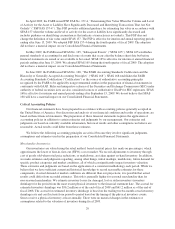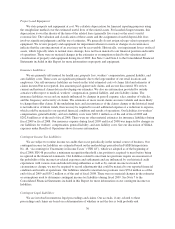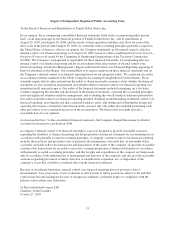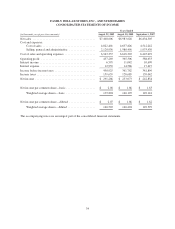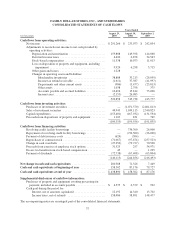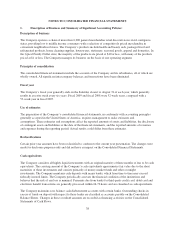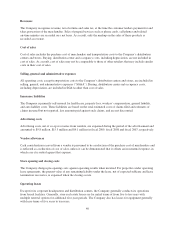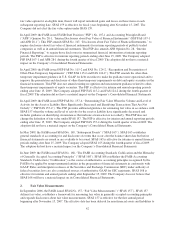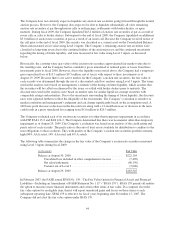Family Dollar 2009 Annual Report Download - page 46
Download and view the complete annual report
Please find page 46 of the 2009 Family Dollar annual report below. You can navigate through the pages in the report by either clicking on the pages listed below, or by using the keyword search tool below to find specific information within the annual report.NOTES TO CONSOLIDATED FINANCIAL STATEMENTS
1. Description of Business and Summary of Significant Accounting Policies:
Description of business
The Company operates a chain of more than 6,600 general merchandise retail discount stores in 44 contiguous
states, providing low to middle income consumers with a selection of competitively priced merchandise in
convenient neighborhood stores. The Company’s products include health and beauty aids, packaged food and
refrigerated products, home cleaning supplies, housewares, stationery, seasonal goods, apparel and domestics. In
the typical Family Dollar store, the majority of the products are priced at $10 or less, with many of the products
priced at $1 or less. The Company manages its business on the basis of one operating segment.
Principles of consolidation
The consolidated financial statements include the accounts of the Company and its subsidiaries, all of which are
wholly owned. All significant intercompany balances and transactions have been eliminated.
Fiscal year
The Company’s fiscal year generally ends on the Saturday closest to August 31 of each year, which generally
results in an extra week every six years. Fiscal 2009 and fiscal 2008 were 52-week years, compared with a
53-week year in fiscal 2007.
Use of estimates
The preparation of the Company’s consolidated financial statements, in conformity with accounting principles
generally accepted in the United States of America, requires management to make estimates and
assumptions. These estimates and assumptions affect the reported amounts of assets and liabilities, the disclosure
of contingent assets and liabilities at the date of the financial statements, and the reported amounts of revenues
and expenses during the reporting period. Actual results could differ from these estimates.
Reclassifications
Certain prior year amounts have been reclassified to conform to the current year presentation. The changes were
made for disclosure purposes only and did not have an impact on the Consolidated Financial Statements.
Cash equivalents
The Company considers all highly liquid investments with an original maturity of three months or less to be cash
equivalents. The carrying amount of the Company’s cash equivalents approximates fair value due to the short
maturities of these investments and consists primarily of money market funds and other overnight
investments. The Company maintains cash deposits with major banks, which from time to time may exceed
federally insured limits. The Company periodically assesses the financial condition of the institutions and
believes that the risk of any loss is minimal. Payments due from banks for third-party credit card, debit card and
electronic benefit transactions are generally processed within 24-72 hours and are classified as cash equivalents.
The Company maintains zero balance cash disbursement accounts with certain banks. Outstanding checks in
excess of funds on deposit with respect to these banks are classified as accounts payable on the Consolidated
Balance Sheets. Changes in these overdraft amounts are recorded as financing activities on the Consolidated
Statements of Cash Flows.
38



